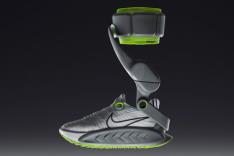A Runny Nose
I used to run with a stash of Kleenex in my pocket until I learned a more efficient, cleanly way to deal with a runny nose—the farmer's blow. Here's how to do it:Take a deep breath in and rotate your head to the left. Press your middle finger on your right nostril, exhale, and blow through your left nostril. Take a few normal breaths and repeat on the other side by turning your head to the right, pressing on the left nostril, and blowing.
Learn this on your own before trying it in a run; the first few times you might actually hit yourself or someone next to you. Try it while walking and then progress to blowing on the run.
More: Should You Run With a Cold?
Start-Line Bathroom Break
It happens at every race: you arrive, get warmed up, and then have to use the bathroom, but the line is so long you risk missing the start. Don't let this runner's problem keep you from starting on time. Try these tips:- Allow plenty of time to eat pre-race.
- Drink 12 to 16 ounces of water when you wake up.
- Consume your pre-race meal 2 to 3 hours prior to the race start. If you have a sensitive system, try eating a snack before bed and a high carbohydrate snack (banana, plantains, apple and a smear of nut butter) 1 to 1.5 hours before the race.
- If you drink coffee or tea, drink a half as much as usual, to get things moving. Drink it at least two hours before the race to encourage a bowel movement.
- Stop drinking fluids one hour before the race start.
- Top off your fluids five minutes before the race by drinking 6 to 8 ounces of sports drink.
If you find you still have to go before the start, find a tree or bush or open the front and back doors of your car to create a private bathroom space. If it's a number two issue, you have two choices: wait it out in line or use a porta potty on the course (most races have them at every mile).
More: 28 Things Only Runners Understand
That Time of the Month
Having your cycle during race weekend can create an added challenge, ranging from painful cramps and heavy flow to chafing and elevated heart rates. Here's how to deal with this female-specific running problem:- Track your cycle to sync it with your training, which may help improve performance and recovery. Use an app like Woman Calendar to do so.
- When I started understanding my cycle, I discovered that we have a built-in training rhythm. Schedule your building weeks when you're feeling great (during the first half of your cycle) and cutback distance and intensity when your body is craving recovery and down time (during the last quarter of your cycle).
- Eat a clean diet to reduce symptoms, and decrease the intensity and volume during the later phase of your cycle; this can help especially with PMS.
- Run and race based on effort and how your body feels, rather than a pace. This will help you recover more efficiently and avoid more pronounced menstrual symptoms related to undo stress on the body.
If you have your period on a race weekend, use tampons rather than pads to reduce odor and chafe. It's also wise to trim the tampon string and use lube to prevent chafing. On race day, tape a compact tampon to the inside of your bib number for easy access.
- 2
- of
- 2
Get ACTIVE on the Go


Couch to 5K®
The best way to get new runners off the couch and across the finish line of their first 5K.
Available for iOS | Android







Discuss This Article